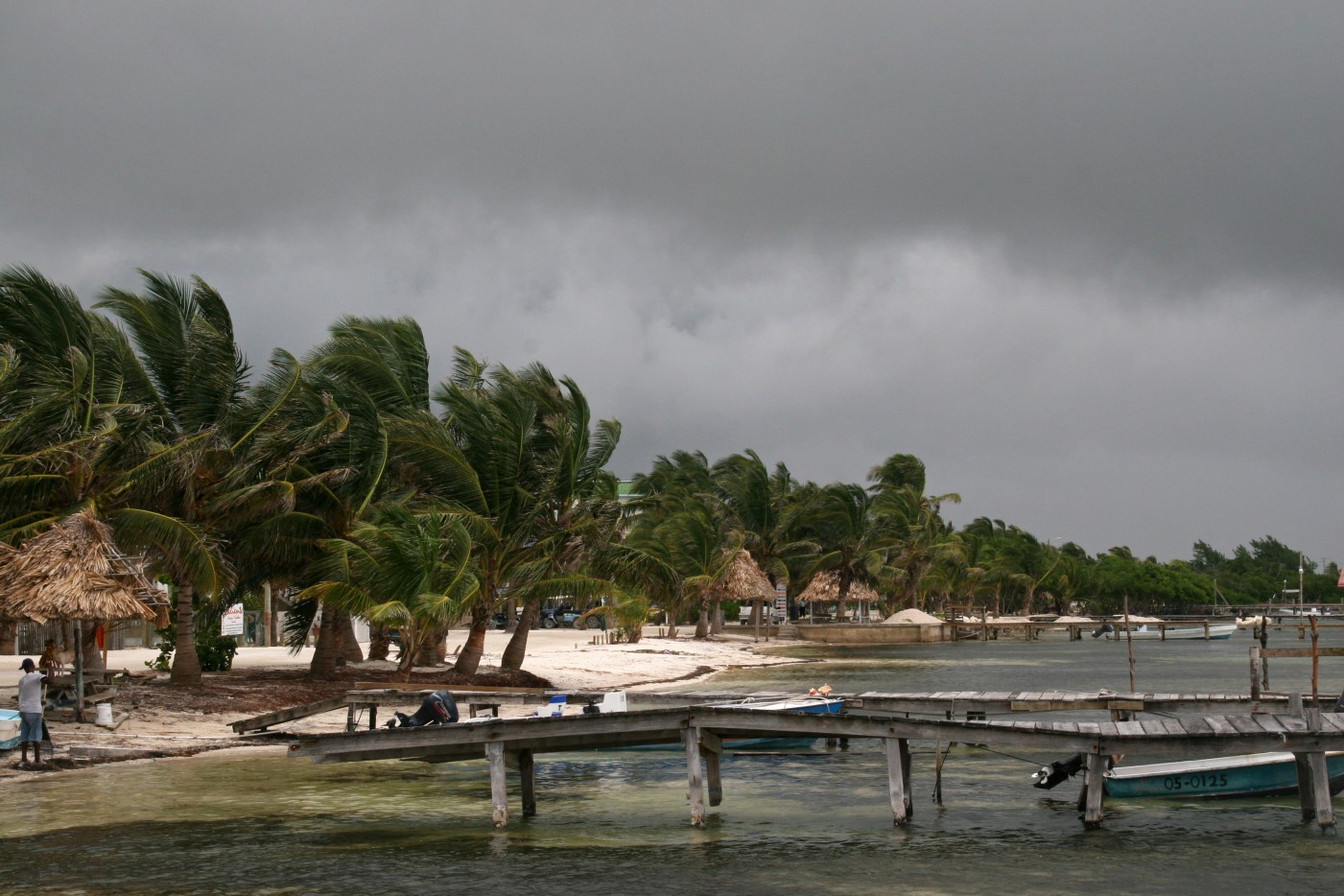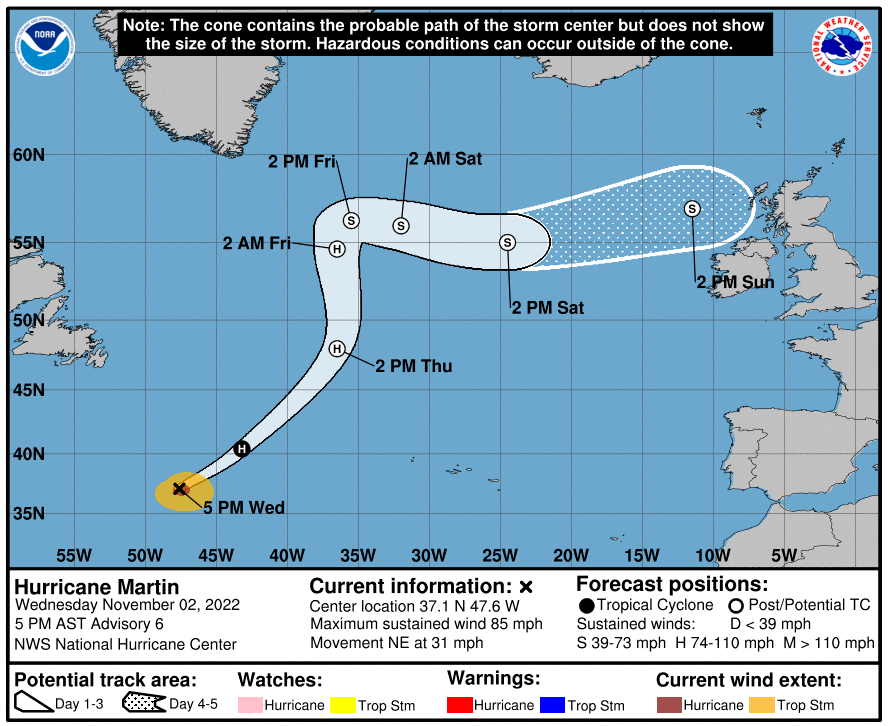
Heavy Rain, Flooding, and Chance of Severe Weather Staring Down the Southern U.S.
January 22, 2024
Posted: November 2, 2022 5:44 pm





There are now two hurricanes in the Atlantic basin as the season heads into its final month. Here is what you need to know about Hurricane Lisa and Hurricane Martin.
What was just Tropical Storm Lisa is now Category 1 Hurricane Lisa. The 12th named system of the season became the sixth hurricane when it gained in intensity and size on Wednesday as it churned along in the western Caribbean.

As of mid-morning Wednesday, Hurricane Lisa was positioned about 55 miles east-southeast of Belize City. The storm is sporting maximum sustained winds of 80 mph, a marked increase from the winds of just 45 mph only 24 hours earlier. Hurricane Lisa is moving to the west at a fast clip of 14 mph.
The hurricane force winds stretch out about 10 miles from the storm’s center. Meanwhile, the tropical storm force winds extend about 70 miles from the eye, making Lisa a compact storm. Lisa is forecast to make landfall in Belize late Wednesday.
The entire coast of Belize stretching from Chetumal up through Puerto Costa Maya, Mexico is now under a hurricane warning. Tropical storm warnings have been issued for the coastal areas of Honduras and Guatemala. There is an additional tropical storm warning in effect in an area stretching from Puerto Costa Maya to Punta Allen, Mexico. The warning area also includes the Bay Islands of Honduras.
Lisa began to organize and intensify on Sunday, sending up the red flag that trouble was brewing in the tropics. The National Hurricane Center (NHC) designated the system as a potential tropical cyclone on Sunday evening. By Tuesday, the feature had evolved into a tropical storm as it gathered more moisture.
The storm has been able to intensify quickly because of its relatively small size. The feature also benefited from the bathlike water temperatures in this part of the Caribbean that have been registering in the 80s. A lack of wind shear also helped to contribute to its rapid strengthening.
Forecasters are predicting that a general 4 – 8 inches of rain will fall in the primary impact zone. This amount of rain will raise the risk of urban flooding as waterways overflow their banks. The hilly terrains will also be under the gun for potential mudslides. While Belize is forecast to take the brunt of Lisa’s force, the storm may affect areas as far north as southern Mexico and as far inland as Guatemala.
Winds will also be an issue with Lisa. Gusts of up to 90 mph are predicted within 100 miles of the center of the storm. Winds of this magnitude will likely bring down power lines and trees, knocking out electricity and bringing about structural damage to vulnerable homes and businesses.
Lisa is predicted to devolve into a tropical depression or rainstorm on Thursday or Friday. While some models had originally predicted that Lisa may emerge in the eastern Pacific after crossing over Central America, that track does not seem likely at this point. However, the remnants of Lisa could turn to the north and travel into the southwestern portion of the Gulf of Mexico.
Also on Wednesday, Tropical Storm Martin turned into Hurricane Martin. The storm is now a Category 1 storm moving over the open waters of the northern tier of the Atlantic Ocean. Martin is the seventh hurricane of the 2022 Atlantic season.

The good news is that Martin is not currently predicted to deliver any meaningful impacts to land in the coming days. However, forecasters are warning that Martin could affect parts of Europe in the coming days if it survives the trip across the pond.
As of late Wednesday morning, Martin was spinning about 1,300 miles to the west of the Azores islands. The storm is moving quickly at a speed of 26 mph, heading in an east-northeast direction. Hurricane Martin has sustained winds of 75 mph and is expected to intensify in the coming hours.
The current conditions in the North Atlantic may give Martin the strength that it needs to survive as a hurricane or tropical storm, eventually tracking toward the United Kingdom.
With the formation of Hurricane Martin on Wednesday, 2022 makes only the third time in recorded history that two hurricanes were brewing in the Atlantic basin at the same time.
Did you find this content useful? Feel free to bookmark or to post to your timeline for reference later.

January 21, 2024

January 19, 2024

January 18, 2024